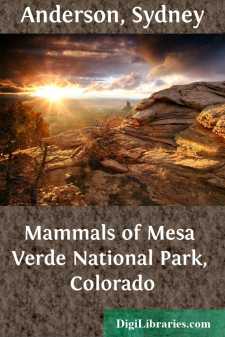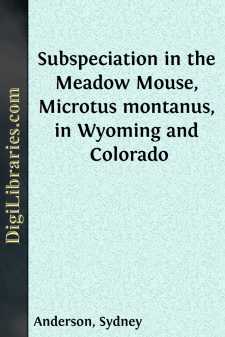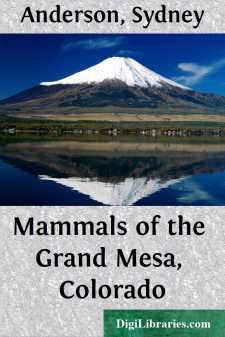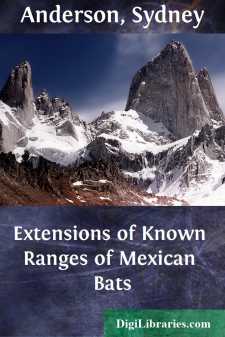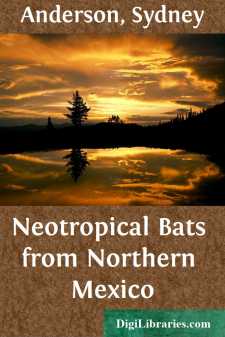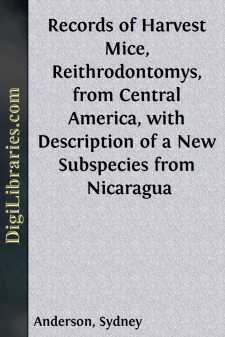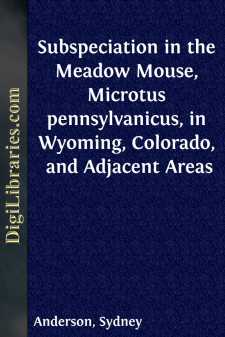Categories
- Antiques & Collectibles 13
- Architecture 36
- Art 48
- Bibles 22
- Biography & Autobiography 813
- Body, Mind & Spirit 142
- Business & Economics 28
- Children's Books 16
- Children's Fiction 13
- Computers 4
- Cooking 94
- Crafts & Hobbies 4
- Drama 346
- Education 46
- Family & Relationships 57
- Fiction 11829
- Games 19
- Gardening 17
- Health & Fitness 34
- History 1377
- House & Home 1
- Humor 147
- Juvenile Fiction 1873
- Juvenile Nonfiction 202
- Language Arts & Disciplines 88
- Law 16
- Literary Collections 686
- Literary Criticism 179
- Mathematics 13
- Medical 41
- Music 40
- Nature 179
- Non-Classifiable 1768
- Performing Arts 7
- Periodicals 1453
- Philosophy 64
- Photography 2
- Poetry 896
- Political Science 203
- Psychology 42
- Reference 154
- Religion 513
- Science 126
- Self-Help 84
- Social Science 81
- Sports & Recreation 34
- Study Aids 3
- Technology & Engineering 59
- Transportation 23
- Travel 463
- True Crime 29
Mammals of Mesa Verde National Park, Colorado
by: Sydney Anderson
Description:
Excerpt
INTRODUCTION
A person standing on the North Rim of the Mesa Verde in southwestern Colorado sees a vast green plain sloping away to the south. The plain drops 2000 feet in ten miles. On a clear evening, before the sun reaches the horizon, the rays of the sun are reflected from great sandstone cliffs forming the walls of deep canyons that appear as crooked yellow lines in the distance. Canyon after canyon has cut into the sloping green plain. These canyons are roughly parallel and all open into the canyon of the Mancos River, which forms the southern boundary of the Mesa Verde. If the observer turns to the north he sees the arid Montezuma Valley 2000 feet below. A few green streaks and patches in the brown and barren low country denote streams and irrigated areas. To the northeast beyond the low country the towering peaks of the San Miguel and La Plata mountains rise more than 4000 feet above the vantage point on the North Rim at 8000 feet. To the northwest, in the hazy distance 90 miles away in Utah, lie the isolated heights of the La Sal Mountains, and 70 miles away, the Abajo Mountains (
).In the thirteenth century, harassed by nomadic tribes and beset by years of drouth, village dwelling Indians left their great cliff dwellings in the myriad canyons of the Mesa Verde, and thus ended a period of 1300 years of occupancy. The story of those 1300 years, unfolded through excavation and study of the dwellings along the cliffs and earlier dwellings on the top of the Mesa, is one of the most fascinating in ancient America. To stop destructive commercial exploitation of the ruins, to preserve them for future generations to study and enjoy, and to make them accessible to the public, more than 51,000 acres, including approximately half of the Mesa, have been set aside as Mesa Verde National Park, established in 1906. The policies of the National Park Service provide protection, not only for the features of major interest in each park, but for other features as well. Thus the policy in Mesa Verde National Park is not only to preserve the many ruins, but also the wildlife and plants.
Five considerations prompted me to undertake a study of the mammals of Mesa Verde National Park: First, the relative lack of disturbance; second, the interesting position, zoogeographically, of the Mesa that extends as a spur of higher land from the mountains of southwestern Colorado and that is almost surrounded by arid country typical of much of the Southwest; third, the discovery in the Park of Microtus mexicanus, a species of the Southwest until then not known from Colorado; fourth, the co-operative spirit of the personnel at the Park when I visited there in 1955; and finally, the possibility of making a contribution not only to our knowledge of mammals, but to the interpretive program of the Park Service.
Fig. 1.Map of the "four corners" region showing the position of Mesa Verde National Park (in black) relative to the mass of the Southern Rocky Mountains above 8000 feet elevation (indicated by stippled border) to the northeast in Colorado, and the positions of other isolated mountains in the region....

